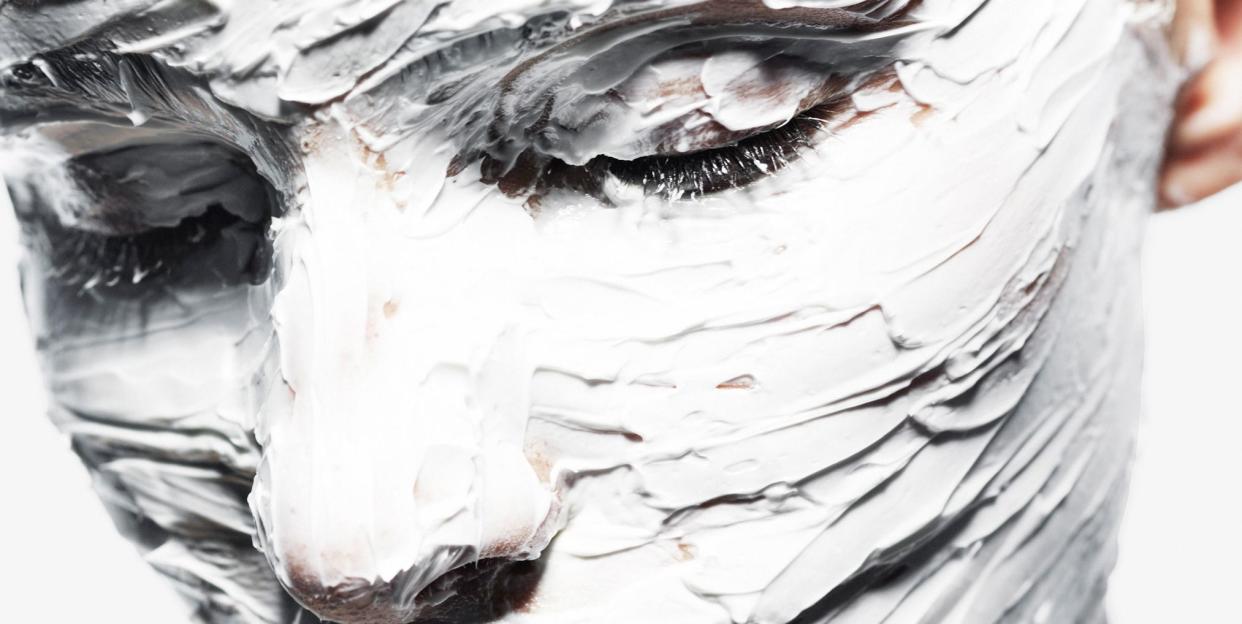How to Properly Layer Skincare

SkinTok loves a rebrand. Nothing goes viral faster than a tried-and-true skincare technique blessed with a catchy new name. The “skin flooding” of 2023 and last year’s “moisture sandwich” really aren’t any different from 1968’s Clinique 3-Step or even Elizabeth Arden’s “Venetian Toilet” from 1910. Each simply describes a multistep routine: After cleansing, layer on your goodies from lightest to heaviest. But while Elizabeth Arden and Norman Orentreich (Clinique’s and Andy Warhol’s go-to dermatologist) designed their regimens to bring balance to unhappy complexions, today’s sandwiches and floods pursue a single-minded goal: getting maximum moisture into skin.
The most extreme version of this is “slugging.” The term comes from K-beauty, but the technique has been the glowing skin secret for generations of Black women, as well as a common solution for dryness recommended by dermatologists. You start with an essence or hydrating serum on damp skin, follow it with a lipid-rich emollient cream, then seal it all in with a water-free occlusive topper such as Aquaphor or Futurewise Slug Balm, the star product in a new line specifically designed for slugging. This might not be something you want to do every night, however, as occlusives can clog pores. A better strategy, especially if you’re prone to acne, is to conclude your regimen with a rich but breathable moisturizer—like the newly reformulated La Mer Soft Cream, which contains billions of moisturizing microspheres designed to deliver their payload to specific zones in the stratum corneum. On nights when you choose to incorporate an alpha hydroxy acid or a retinol, layer these products on last, so that the moisturizer acts as a buffer. “This slows the penetration of the active into skin, which can reduce irritation,” says Carmen Castilla, a New York–based holistic dermatologist.
For those who want to keep their routines uncomplicated but still lock in hydration, the holy grail ingredient is hyaluronic acid. Even though it’s now ubiquitous, HA is too large to be absorbed topically, so formulators have to get crafty when designing delivery systems. “You can chop up the molecule—make it smaller, so that some of it will penetrate—but that will reduce its efficacy,” says Mika Fujii, the young genius responsible for formulating Skin Filler serums, the brand new, absolutely bonkers HA innovation from Shiseido (where synthetic HA was first made). In a manner similar to stuffing a sleeping bag into its impossibly tiny storage sack, Shiseido’s Skin Filler uses a magnetic corset to bind each HA molecule, collapsing it enough that it can slip into skin while we sleep. In the morning a second serum removes the magnets and—Pop!—the HA returns to full size, too big to slip back out. Top it with a moisturizer, and your “skin flooding”—or whatever you choose to call it—is done.
There will always be new tech and new techniques, but by now most of us know how to take care of our skin. We’ve spent our entire lives learning. Let TikTok suck away your time, but don’t let it devalue your hard-earned knowledge. Our minds are palimpsests, according to Thomas de Quincey, everyone’s favorite opium-eater: “Everlasting layers of ideas, images, feelings, have fallen upon your brain softly as light. Each succession has seemed to bury all that went before. And yet, in reality, not one has been extinguished.” Our faces are palimpsests too—our cheeks kissed again and again, over the years, by puppies, by babies, by the sun; our frowns melted away by those same puppies and babies, or Botox; our lotions and potions, evanescent layers of care and comfort that fall on us, into us, soft as light.
This story appears in the May 2023 issue of Town & Country. SUBSCRIBE NOW
You Might Also Like
